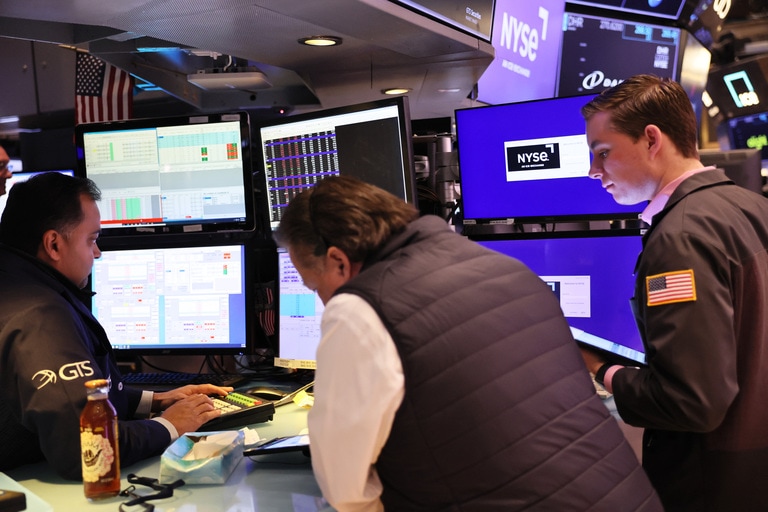It’s been another negative session for European markets with the DAX pushing ever closer to six-month lows, as the technical break below the 200-day SMA continues to accelerate away.
Europe
The FTSE 100 is holding up well largely due to the continued weakness in the pound and a belief, according to Goldman Sachs, that a weaker currency and higher oil price will help insulate it from the worst of any economic weakness. This comes across as somewhat simplistic given the damage higher oil prices could do to the margins of its other big caps like Unilever and Diageo, and other consumer retail, nonetheless it ought to be positive for the likes of BP, Shell, and Glencore.
On the plus side, Barclays is one of the better performers after being raised to overweight by Morgan Stanley. RS Group is also higher after being mentioned in a Betaville report regarding potential takeover speculation from a private equity group.
The UK’s second biggest supermarket Sainsbury's is lagging today on concerns that any improvement in its food retail business won’t be enough to offset a sharp drop off in general merchandise and its Argos division, with recent retail sales data pointing to general weakness in this sector of the economy. It is somewhat puzzling that UBS thinks that this problem will be unique to Sainsbury's, given that Tesco and Marks & Spencer both have sizeable general merchandise divisions, which suggests the main concern might be more to do with the Argos operation, than with clothing and other areas.
Smiths Group is also under pressure despite a solid set of full-year numbers, which saw annual revenues rise 18% to £3.04bn, while profits for 2023 rose to £360m from £103m the year before. The company which makes airport security scanners also raised its dividend by 2p per share to 41.6p. Even its guidance was positive, predicting full year revenue growth of between 4% and 6%, .
Fast fashion retailer Asos initially slipped back to its August lows after warning that full-year profits would come in at the low end of expectations, after reporting that Q4 revenue slid 15%. The sharp losses proved short-lived, with the shares rebounding on the basis that gradually improving margins would help it to return to profit.
US
US markets opened lower, unwinding a lot of the late rally seen into the close yesterday, as once again concerns over higher rates and slow growth cause investors to prepare for the possibility of further declines.
Tesla shares have slipped back on reports that its China produced exports could find themselves in the cross hairs of EU regulators. Tesla ships quite a lot of its China produced cars into the EU, and the recently announced investigation by EU regulators could see Tesla imports subject to tariffs if they are found to have benefitted from Chinese subsidies.
FX
The US dollar rose to its highest levels against the Japanese yen since October last year above 149.00 before slipping back on comments from Japanese finance minister Suzuki saying that he viewed recent currency moves on the currency with a high sense of urgency. Suzuki went on to say that appropriate action would be taken against rapid FX moves.
While today’s comments indicate that the Japanese government is concerned about a weaker currency, there is little likelihood that the comments will do anything other than slow the decline. In essence the current trend appears to be akin to trying to pick up pennies in front of a steamroller. Momentum is in the US dollars favour while the Bank of Japan continues to argue the case for further easing, against a backdrop of a US economy that is still seeing the trickledown effect of the fiscal stimulus effects of the ironically named inflation reduction act which is making the Federal Reserve’s job much more difficult in reining in inflationary pressures. The very prospect of stickier US inflation will mean that Fed will err more towards higher US rates for longer which means the line of least resistance is for USD/JPY to move through 150 and on to last year’s peak at 152.00, unless the BoJ suddenly reverses course.
The pound has continued to come under pressure sinking to a fresh six-month lows against the US dollar below 1.2200 and increasing the risk we could see further losses towards the 1.2000 level.
While the outlook for the pound looks increasingly bleak it’ s hard to make a positive case for the euro either, with the prospect of further losses towards the 1.0500 area, as the outlook for the euro area economy deteriorates further in the face of higher rates and energy costs.
Commodities
The outlook for gold continues to look bleak after last week’s failure to crack the $1,950 level. With the US dollar continuing to look strong the bias remains for a move back to this month’s low near the $1,900 area, and a possible break lower towards $1,880 and the August lows.
Despite the wider risk off tone which has been prevalent in markets this week oil prices have been holding up reasonably well, retreating only modestly from the 10-month highs of last week. While markets are increasingly pricing in the likelihood of a $100 crude oil, the other side of the equation may well have been overlooked, namely the effect such a price move could have on economic activity with the prospect of significant demand destruction.
Volatility.
CMC’s proprietary basket of renewable energy stocks remains under pressure, although it found a modicum of support during Monday’s session. The cohort has lost over 30% of its value across the last couple of months with high interest rates and recession concerns weighing. One day vol on the basket printed 48.82% against 36% for the month.
Keeping with proprietary baskets and the direct-to-consumer cohort, where Amazon is the biggest constituent, also saw elevated levels of price action on Monday. These stocks have been under pressure for the last couple of months with the same story of recession risk and high borrowing costs taking a toll. However, with the macroeconomic backdrop now possibly improving, some support is creeping in. One day vol stood at 28.85% against 22.93% for the month.
US equity indices may have started the run into the month end on the back foot with concerns about a possible shut down of the US government and China’s economic woes weighing, but downside pressures proved to be short lived. All major Wall Street indices closed in the black on Monday, with the S&P 500 seeing one day vol of 14.36% against 10.29% for the month.
Oil prices have been drifting lower off the back of a few fundamentals, with Russia’s easing of fuel export bans also helping. West Texas Intermediate traded down to $89.5 although had reverted above the $90 mark by our calculation point of midnight in London. One day vol on WTI printed 29.15% against 24.42% for the month.
Disclaimer: CMC Markets is an execution-only service provider. The material (whether or not it states any opinions) is for general information purposes only, and does not take into account your personal circumstances or objectives. Nothing in this material is (or should be considered to be) financial, investment or other advice on which reliance should be placed. No opinion given in the material constitutes a recommendation by CMC Markets or the author that any particular investment, security, transaction or investment strategy is suitable for any specific person. The material has not been prepared in accordance with legal requirements designed to promote the independence of investment research. Although we are not specifically prevented from dealing before providing this material, we do not seek to take advantage of the material prior to its dissemination.







